Happy Halloween everyone. Let’s get the market update out of the way before we get to the really scary stuff happening shortly – the election.
Stocks had a decent month as of this writing, with the Dow flat and the S&P and NASDAQ advancing slightly. But we’re really in a holding pattern ahead of some economic data later this week, Q3 earnings reports coming up, and the aforementioned election around the corner.

The bigger news this month was the increase in longer term interest rates. We mentioned last month that, while unintuitive, long term rates could go up even while the Fed is cutting short term interest rates. What we didn’t expect was for a move to happen this quickly. Here’s the change in the 10-year yield since the Fed cut rates last meeting.

As a reminder, we said that positive economic news could cause long-term rates to rise during this cutting cycle.
This week we got data for retail sales for September and the first two weeks of October, and it shows that the US consumer continue to do well, driven by solid job growth, strong wage growth, and high stock prices and home prices.
With the Atlanta Fed GDP estimate for the third quarter currently at 3.4%, the bottom line is that the expansion continues.
Why is the economic data so strong? Because the list of tailwinds to the economy keeps growing:
1) A dovish Fed
2) High stock prices, high home prices, and tight credit spreads
3) Public and private financing markets are wide open
4) Continued support to growth from the CHIPS Act, the IRA, the Infrastructure Act, and defense spending
5) Low debt-servicing costs for consumers with locked-in low interest rates
7) Geopolitical risks easing
8) US election uncertainty will soon be behind us
9) Continued strong spending on AI, data centers, and energy transition
10) Signs of a rebound in construction order books after the September rate cut
While you can take issue with a couple of those items (like #7), this paints a picture of a stronger economy and a future with higher long-term rates, not the opposite. Mortgage rates are now above 7% again and a further move upward in rates may start to negatively impact stock prices.
But the economy is only one part of the reason that rates have been creeping up again. For those that haven’t chosen a Halloween costume yet, here’s the scariest thing you can dress up as tonight:
The US National Debt.

There has been a flood of new Treasury bonds issued since the debt ceiling was raised this summer and we’ve added $600 billion to the debt in the last 2 months. At this rate, we’ll be at the highest debt-to-GDP since World War 2 by next year.
We have an election next week which and each candidate has their own version of policy that they best think will improve the lives of the American people. What might each of their policies might do to the debt if implemented? Per the non-partisan Committee for a Responsible Federal Budget:

Each candidate has plans to maintain deficit spending in the 6% to 8% of GDP range. Deficits at these levels used to be reserved for deep recessions. Both candidates are throwing off the previously conservative shackles of perceived budget constraints. Concerns about the size of the deficit are likely to continue regardless of who wins. And a continued rise in the relative size of the federal debt risks upward pressure on interest rates and inflation, and potential ratings downgrades on US Treasury securities.
Now, forecasting something as complex as the US budget deficit 10 years into the future is notoriously difficult. We’re also analyzing certain policies that may not ever come to fruition. But the fact is, not only do both candidates’ economic agendas not include any plans to address the rising debt levels in the US, but they aren’t even mentioning it’s a problem.
The first step to solve the budget problem is to acknowledge it. But at Harris and Trump’s presidential debate, the word “debt” was not mentioned once. Nor can it be found in the 2024 Republican party platform. Harris makes only passing references to debt and deficits in her campaign policy book, arguing that she compares favorably to Trump.
Now, the good news is that this has been a known issue for decades, and it’s not like the world is going to disregard using the dollar overnight. We’re also focusing on the debt side of the ledger – there’s a potential that the growth generated by any economic policy helps to absorb the extra debt issued to get there.
But at some point, at our current trajectory, we might find ourselves with a problem. We fund our deficits with bonds, and we’ll need to issue a lot more of them to pay for additional government spending.
Regardless of who wins the election next week, we’ll need to deal with this issue at some point or else 7% mortgage rates might sound like a great deal in the not-too-distant future.
And finally, we’re big fans of the new Dune movies. A look-alike contest was held in Washington Square Park in New York City last weekend to see who most resembles the star of the movies, Timothée Chalamet. The best part? Chalamet made an appearance at the contest. He didn’t enter, but perhaps he wouldn’t have won even if he did.
Dolly Parton has recounted entering a Parton look-alike contest in a Hollywood bar, where she did not identify herself. She said she got the least applause of any of the contestants. Charlie Chaplin Jr. told the story of his father entering a Chaplin look-alike contest at Graumin’s Chinese Theater. He finished third.




